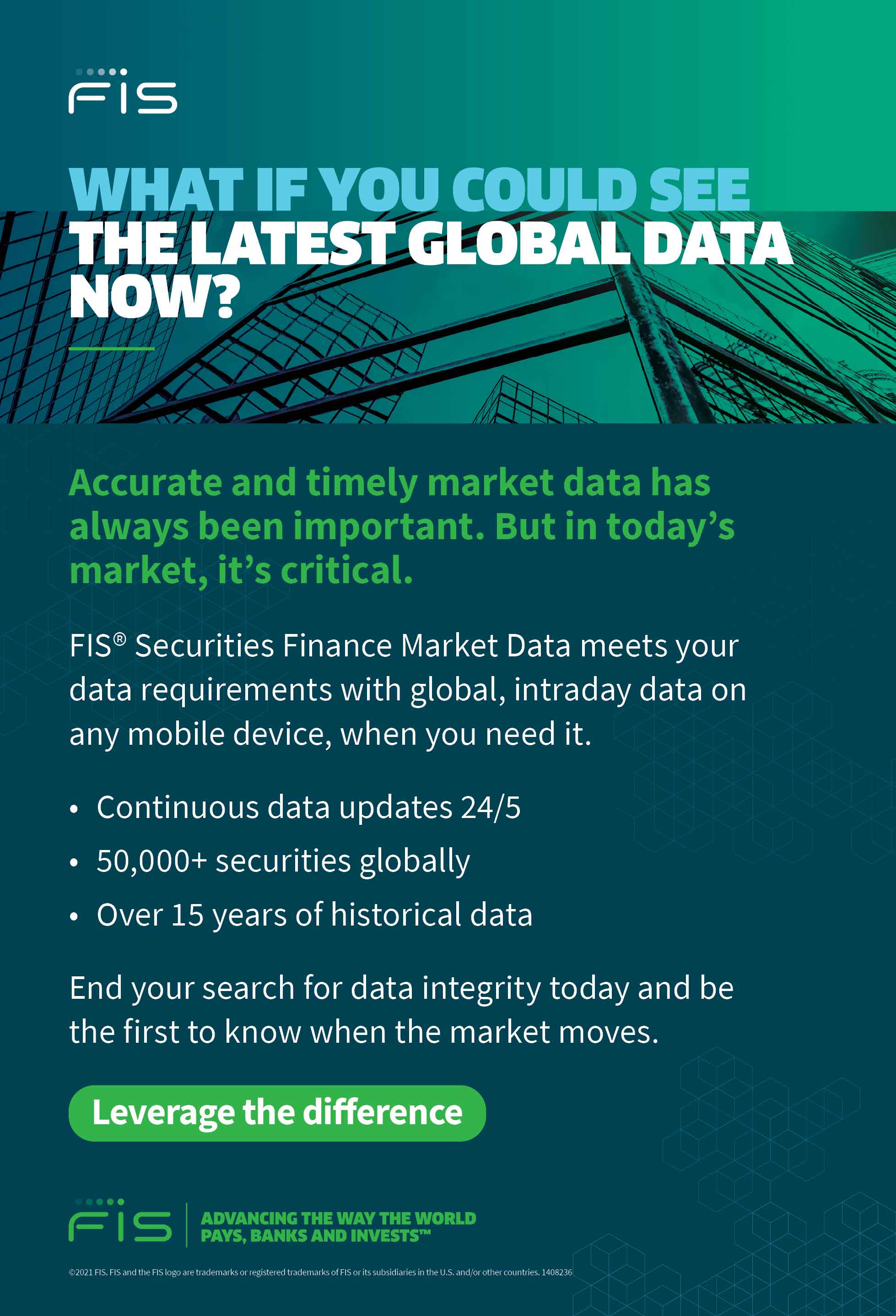FIS’ David Lewis asks how much firms are willing to give away in order to get ahead as they reassess business strategies and build for the future
June saw the return of the International Securities Lending Association (ISLA) Conference, marking what many hope to be the return to in-person meetings and more normal ways of doing business. A return to the good old days even. In contrast, the conversations were all about the future, whether these related to digital assets, distributed ledger technologies or other initiatives destined to revolutionise our marketplace.
As a panel moderator at the conference, I was gifted a great subject and a fantastic panel of contributors. Like many such occasions, there was a plan and a set of questions to advance through — but once the panel started, it was clear there was too much to discuss and the planned end would never be reached. One of the threads that ran through the conversation was worthy of a long discussion in its own right – can collaboration and competition coexist?
Going back a step, the panel was charged with examining whether it was necessary for organisations to collaborate to converge on market standards quickly and effectively. The benefits of market standards are many, of course, but the introduction of a new standard can often result in just adding it to the list, rather than replacing all others — as would have been the original intention. The key to success of a new standard is to achieve buy-in from those that need to use it and this requires a degree of openness that has, perhaps, not always existed.
The preparation work for the Securities Financing Transactions Regulation (SFTR) became, intentionally or otherwise, a model (or even, dare I say it, a new standard) for cross-industry collaboration, prompting competing firms to work together, first to understand what is required by the regulation and then to deliver it.
Openness and sharing do not seem to be natural components of a commercially effective strategy, but that view is changing as new ways of working are spreading across the industry. The challenge of meeting regulatory demands, especially against a testing timeframe, has helped to focus minds and to ease many into the idea that collaboration is not necessarily a bad thing. Consequently, the example was set and the doors had been opened. So where could this collaboration take the industry and where should the most effort be applied?
Much work is being done, not least at FIS, on solutioning for the most economic match. This brings many more data aspects into the calculation than at any time previously, and the positive effects at the point of trade are obvious. However, many more benefits are to be gained from the post-trade impact of such advances. Effective matching at the point of trade using common taxonomies and regulatory compliant data fields eradicates the need for reconciliations and confirmations as we used to know them. Distributed ledgers ensure there is one (replicated) source of truth for transactions, not many.
Changing paradigms
Achieving the potential benefits to the market of improved post-trade management requires better data at the point of trade, but also improved system interoperability. The lack of interoperability between systems employed across the securities finance industry, both within and between market participants, used to be seen as an opportunity. Build an interface to XYZ system? Of course, that can be done. At a cost. With the advent of initiatives like the Common Domain Model (CDM), the days of such projects are numbered and the seamless exchange of data between systems, even from competing providers, is on the horizon.
New generations of people entering the market struggle to understand such challenges — not the technical difficulty, but why they exist at all. Generationally, those coming into our industry expect interoperability as standard, which is largely due to a different approach to learning and teaching. The connection between this new approach and the educational shift from end-of-year individual exams to more coursework and team-based working and assessments cannot be coincidental.
Many of those on the panel were clear advocates of openness and sharing of ideas, all designed to move the community forward. Such phraseology may be foreign to some, but it represents new thinking from new entrants who are taking this approach to the way they work together. But don’t be fooled, these are also highly competitive people from very successful organisations — and that, in itself, is enough to warrant attention.
Working with the panellists, and on projects like CDM, helps to identify how organisations can be both open and competitive. Much of this has to do with mindset and having a more community-oriented focus. The advent of ESG, of course, is another outcome of such changes in attitude. Inefficiencies in processes and markets used to appear as opportunities. Now they are simply viewed as inefficiencies that benefit no one and harm all those in that market. It is this separation that is the key and motivation behind collaborative sharing amongst competitive organisations.
Few organisations will prosper by sharing their hard-earned intellectual property, but all market participants can benefit from solving a shared problem that costs everyone. The advance of open source technologies, promoted by large commercially successful organisations, are showing the way forward. Many industry paradigms are changing and, instead of finding ways to defend the old ways of doing things, those looking forward longer term understand that attempting to hold back the tide will be a mistake.
Looking back to SFTR, no organisation around those working group tables shared trading positions or strategies. However, they were completely open to sharing, for example, the challenges of trade reconciliations and the breaks that exist across datasets. It was not the intellectual property that was shared, but the interest in solving common issues. Taking that attitude and applying it to broader market inefficiencies is the way forward, integrating new technologies such as digital assets and tokenisation but without trying to superimpose them on old models of business.
All that remains is to ask how much you are willing to give away in order to get ahead?


